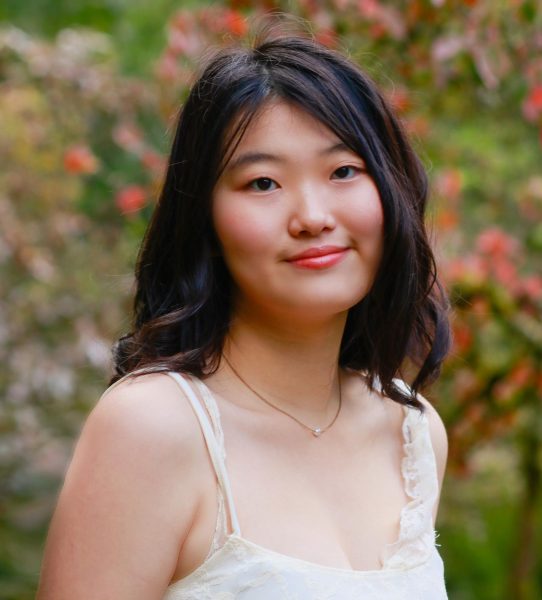In a time where diversity is represented through many aspects of our lives and a generation where screens are more prominent than ever, there is an unfortunate truth regarding our entertainment and media industry and the representation of women. Behind every screen is the battle women in the entertainment and media industry face to find their rightful recognition in Hollywood and the media. It is important to question why there are these gaps in the cinematic and broadcast world when inclusivity matters now more than ever. According to the Harvard Business Review, “As subjects of stories, women only appear in a quarter of television, radio, and print news. In a 2015 report, women made up 19 percent of experts featured in news stories and 37 percent of reporters telling stories globally.” The same can be said about Hollywood’s lack of representation. According to PBS, “The University of Southern California has found that in Oscar’s 95-year history, only 17 percent of nominees have been women and fewer than 2 percent have been women of color. What is more, only 9 percent of the directors of last year’s top 100 earning films were women and less than 3 percent were women of color.” Despite the improvement in recent years in Hollywood and the media, the statistics speak for themselves when looking at the long history of both industries and the percentage of women recognized for their work.
One of the ways Hollywood treats women and continues to perpetuate stereotypes is through their characters and roles. Specifically in giving female actors the role of either the submissive side character or sexualizing their bodies to draw more of a male audience. In an article with Forbes, actress Geena Davis says, “There have been far fewer opportunities for females and other groups to play different characters. Instead, the woman has often been the girlfriend or the wife of the lead character. This was sending a message to everyone in society that women had less value.” By doing this the entertainment industry has set a certain standard of what women are worth, making representation even harder to achieve. Sophomore Penelope Krause says, “I think women are being portrayed as either very traditional, married with kids, or very independent women which I think should be more women portrayed as both. You can be independent and have a family. You do not just have to be a powerful warrior woman. You can be both and have that balance.”
Outside of portrayal on camera, the industry has also continued to spread stereotypes in their treatment of female actresses. When it comes to being asked about their work and projects there has been a significant difference in the media’s treatment of women. When asked about how the media has contributed to negative gender stereotypes, senior Kayla Tehero states, “I think not only with the characters they portray but also in their treatment of female actors in the industry. I think that they are not appreciated for their craft as much as male actors are in terms of interviews where they are asked about their clothes and their appearance rather than their actual work in the film so I think that the media industry does a bad job of that.”
It is important to consider the importance of equal representation of women on our screens. Sandy Lighterman, Miami-Dade County Film and Entertainment Commissioner states, “Women behind the lens and on the creative side can bring a point of view that is necessary to be seen and heard. Not necessarily only about women’s stories, but stories that are seen through women’s eyes. It is a different perspective.” Tehero adds, “Well, for one thing, I think it does well monetarily like the Barbie movie just made billions of dollars, and also it is just perfect for women, in general, to be able to see themselves in a variety of representations and a variety of different instances and characters and different stories because once you see that diversity and see a lot of different things it kind of eliminates those gender stereotypes after seeing a lot of different depth and in a way lead to more equality in general.” Thus, having more representation of women advances the industry for women and eliminates unrealistic or outdated depictions that have been passed down through the decades, allowing women to find their space in male-dominated industries.
An interesting approach Hollywood has taken to include more female voices and spread awareness is the use of the Bechdel test. For a piece of film or work of fiction to pass the test it must include at least two women, who have to talk to each other and their conversation must be about something other than a man. In an interview with the Guardian, Alice Bechdel, for whom the test was named was asked about the test and her thoughts on the number of Hollywood films that have failed the test, she states, “What is really dismaying now is the way so many movies cynically try to take shortcuts and feature strong female characters – but they just have a veneer of strength and they’re still not fully developed characters.” This further puts into perspective the lack of female perspective in many works of fiction today. According to Collider, movies like “Oppenheimer,” “Elvis,” and “The Avengers” are just some of our modern-day movies that have failed to pass this test.
Part of the issue also leads back to the fact that female creatives and voices are not given many opportunities to promote themselves or find the same success as male counterparts. Especially when the narrative of female characters and stereotypes are so prominent, it falls back to Hollywood to promote more stories about women. Freshman Lincoln Young says, “I think Hollywood can try to promote more historical perspectives of women or of strong women in history that have made an impact to show a more real perspective.” Although the responsibility to create more films and works that fight negative gender stereotypes is put on Hollywood to adapt to the times this raises the question of what is considered proper representation especially when half the population is women. More importantly, are women-centered stories even something the general population wants to see more of? Junior Jieden Fenderson points out, “It really depends. On one hand we want to represent women’s stories and tell them but on the other hand, I think we should make women’s stories more realistic. If you see these major corporations like Disney they try to make ‘diverse’ stories but it is honestly just to make profit.”
When it comes to having the representation and recognition they deserve, women in the entertainment and media industry have without a doubt faced many trials and hardships, not to mention society’s role in generating stereotypes that have impacted what is put on our screens for so many years. Krause says, “This stereotypical portrayal of women can be harmful because it puts women in a box and it allows them to think that they can not do much in the world when they can.” So many creative female voices have been silenced for years but thanks to the recent blockbuster hit “Barbie ” it has given rise to a new generation of a decades-old movement for gender equality on our screens. Tehero adds, “After Mattel made the Barbie movie, they were like ‘wow this was a really big hit we’re going to make more movies about toys.’ Everyone was like do not make more movies about toys. The reason why this movie was successful and lucrative was that it is about women. I think if we, not only just women, make more stories about diversity in the media and represent more different groups of people I think it will be super successful.” Slowly but surely women are finding their place in Hollywood and in the media and time will only tell if the filmmaking industry is ready for them.






